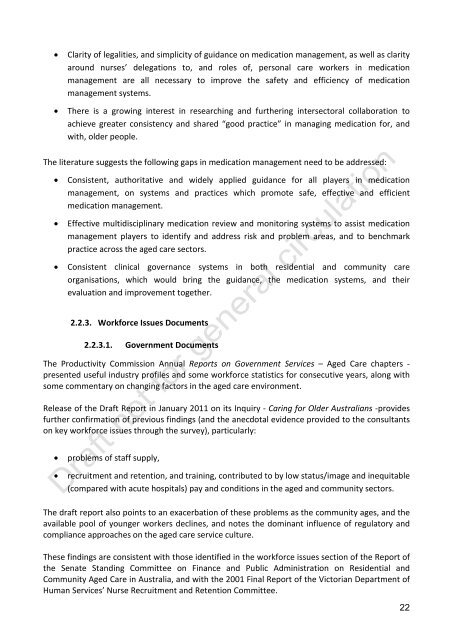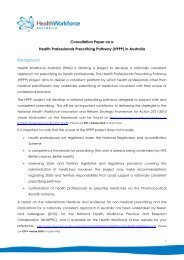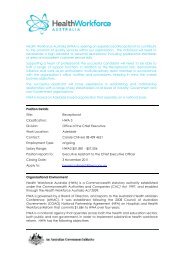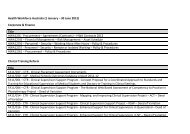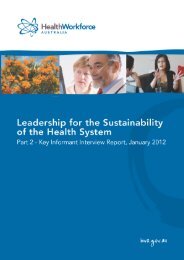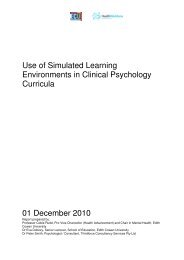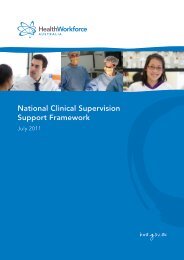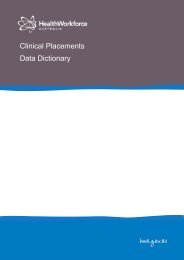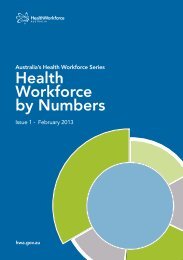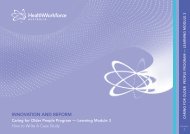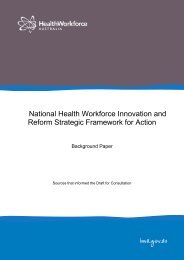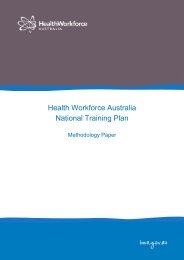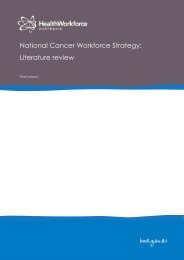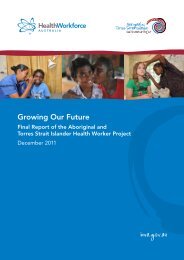SUMMARY - Safe Medications Management project: Key issues and ...
SUMMARY - Safe Medications Management project: Key issues and ...
SUMMARY - Safe Medications Management project: Key issues and ...
Create successful ePaper yourself
Turn your PDF publications into a flip-book with our unique Google optimized e-Paper software.
Clarity of legalities, <strong>and</strong> simplicity of guidance on medication management, as well as clarityaround nurses’ delegations to, <strong>and</strong> roles of, personal care workers in medicationmanagement are all necessary to improve the safety <strong>and</strong> efficiency of medicationmanagement systems.There is a growing interest in researching <strong>and</strong> furthering intersectoral collaboration toachieve greater consistency <strong>and</strong> shared “good practice” in managing medication for, <strong>and</strong>with, older people.The literature suggests the following gaps in medication management need to be addressed:Consistent, authoritative <strong>and</strong> widely applied guidance for all players in medicationmanagement, on systems <strong>and</strong> practices which promote safe, effective <strong>and</strong> efficientmedication management.Effective multidisciplinary medication review <strong>and</strong> monitoring systems to assist medicationmanagement players to identify <strong>and</strong> address risk <strong>and</strong> problem areas, <strong>and</strong> to benchmarkpractice across the aged care sectors.Consistent clinical governance systems in both residential <strong>and</strong> community careorganisations, which would bring the guidance, the medication systems, <strong>and</strong> theirevaluation <strong>and</strong> improvement together.2.2.3. Workforce Issues Documents2.2.3.1. Government DocumentsThe Productivity Commission Annual Reports on Government Services – Aged Care chapters -presented useful industry profiles <strong>and</strong> some workforce statistics for consecutive years, along withsome commentary on changing factors in the aged care environment.Release of the Draft Report in January 2011 on its Inquiry - Caring for Older Australians -providesfurther confirmation of previous findings (<strong>and</strong> the anecdotal evidence provided to the consultantson key workforce <strong>issues</strong> through the survey), particularly:problems of staff supply,recruitment <strong>and</strong> retention, <strong>and</strong> training, contributed to by low status/image <strong>and</strong> inequitable(compared with acute hospitals) pay <strong>and</strong> conditions in the aged <strong>and</strong> community sectors.The draft report also points to an exacerbation of these problems as the community ages, <strong>and</strong> theavailable pool of younger workers declines, <strong>and</strong> notes the dominant influence of regulatory <strong>and</strong>compliance approaches on the aged care service culture.These findings are consistent with those identified in the workforce <strong>issues</strong> section of the Report ofthe Senate St<strong>and</strong>ing Committee on Finance <strong>and</strong> Public Administration on Residential <strong>and</strong>Community Aged Care in Australia, <strong>and</strong> with the 2001 Final Report of the Victorian Department ofHuman Services’ Nurse Recruitment <strong>and</strong> Retention Committee.22


